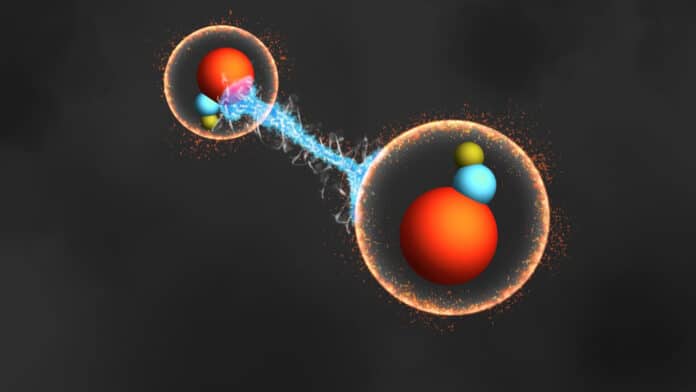Physicists at Caltech search for new clues about the universe by studying behaviors in atoms and molecules that go against the known Standard Model of particle physics. Any differences from this model could reveal “new physics.”
Professor Nick Hutzler and his team focus on finding specific deviations to understand why our universe’s more matter than antimatter. They conduct tabletop experiments looking for unusual particle behaviors that caused the imbalance in our matter-dominated universe, which formed about 14 billion years ago.
In a new study, scientists discovered a way to improve their studies using entanglement. Reporting in Physical Review Letters, they developed a new method to entangle an array of molecules. Their approach serves as probes for measuring symmetry violations. When molecules are entangled, the arrays become less affected by background noise, making the experiment less prone to interference and more capable of detecting the desired signal.
Caltech assistant professor of physics Nick Hutzler said, “It’s like anchoring a bunch of rubber duckies together. If you wanted to measure the movement of the duckies across a tub, they would be less sensitive to the background noise of splashing water if you connected them. And they’d be more sensitive to something you may want to measure, like the flow of a current, since they would all respond to it collectively.”
Chi Zhang, the David and Ellen Lee Postdoctoral Scholar Research Associate in Physics at Caltech, said, “We want to be sensitive to the structure of the molecules. Uncontrolled electric and magnetic fields from the experimental setup get in the way of our measurements. Still, now we have a new protocol for entangling the molecules to make them less sensitive to the noise.”
Hutzler said, “More specifically, this new method can look for tiny electron tilts that may occur in response to electric fields within the molecules. The slight rotations would indicate electrons or nuclear spins are interacting with electric fields, and that’s forbidden according to the Standard Model.”
“Other approaches that use entanglement would typically increase sensitivity to noise. Chi has figured out a way to reduce the noise while giving us a sensitivity gain from entanglement.”
In another study, scientists showed that the polyatomic molecules used in these kinds of studies have other unique abilities to shield themselves from electromagnetic noise, though without the sensitivity boost from entanglement.
Here, scientists showed they can tune the molecule’s sensitivity to external fields and make the sensitivity vanish, thereby rendering the molecules largely immune to noise.
Hutzler said, “With the advantages of entanglement, researchers can push these experiments to probe increasingly exotic sectors of new physics.”
Journal References:
- Chi Zhang et al., Quantum-Enhanced Metrology for Molecular Symmetry Violation Using Decoherence-Free Subspaces, Physical Review Letters (2023). DOI: 10.1103/PhysRevLett.131.193602
- Loïc Anderegg et al., Quantum control of trapped polyatomic molecules for eEDM searches, Science (2023). DOI: 10.1126/science.adg8155
